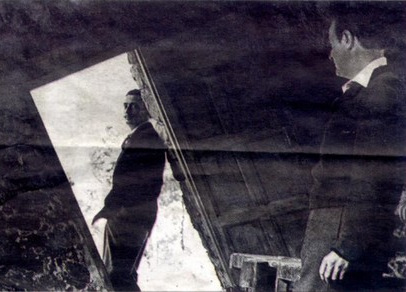The first record of the Mas Juny estate dates back to 1482 when it was noted that its owners had been involved in agriculture. The oldest parts of the house itself are slightly newer, having been built in the 16th-17th centuries, with fairly typical elements representative of the times (like, for instance, a turret that served as protection from pirate attacks). Still, an old age and a pretty ordinary agricultural past of the estate alone wouldn’t warrant its addition to the list of Spain’s most culturally and historically significant sights. What has made it so special?
In 1920s, Mas Juny was purchased by the Catalan artist Josep Sert, who was very much at ease in many artistic and bohemian circles around Europe and the Americas. During the decade that he had owned the house, it had seen many a celebrity visit and spend time here, including Coco Chanel, Luchino Visconti, Marlen Dietrich, and Salvador Dalí.
In 1940, Josep Sert sold the house upon the insistence of his wife Roussadana who had suffered from bad associations with the place after losing her brother Alexis in a terrible car accident. However, the Golden Era of Mas Juny had only just begun. It was subsequently bought by Alberto Puig Palau, a young bon vivant and heir to a multimillion textile empire. Up until the 1970s, when Alberto ran out of parental money, the life at the estate was truly bustling.
By the time he acquired Mas Juny, Alberto Puig had already had a reputation of a generous arts patron and a warm, welcoming host. His home in Barcelona regularly served as a backdrop to fashionable parties attended by the cream of the crop of the local art scene—writers, musicians, and artists. Buying Mas Juny afforded him even more opportunities to throw outrageously fun parties—and throw parties he did! A gossip column in 1945 makes note of the celebrations at Mas Juny that included a bullfight and a performance by the renowned flamenco star Pastora Imperio.
Flamenco was the biggest passion of Alberto Puig. Not one gathering at Mas Juny went by without singing and dancing. The list of artists to ever perform at the estate would make the mouth of any Andalucian folk music fan water: Manolo Caracol, Lola Flores, Carmen Amaya, Antonio “El Pescaílla” González, Pastora Imperio… The house proper wasn’t the best place to promote the art of flamenco to the masses, so Alberto Puig opened a new tablao (a flamenco performance venue) in Palamós, the city closest to the estate.
The charisma and influence of Alberto Puig attracted cinematographers to the Costa Brava. In 1950, Pandora and the Flying Dutchman starring Ava Gardner, and in 1956, The Spanish Gardener featuring the young Dirk Bogart were both filmed here.
Salvador Dalí, having partied at Mas Juny back when it belonged to Josep Sert, was friends with the new owner as well. A quaint hut that you may encounter on a walk in nearby woods had been built specifically for Dalí. Albert Puig really wanted the genius artist to spend more time at the estate, so he arranged for a studio to be erected for him, also adding his own creative touch—the doorframe slanted at a 40° angle—to its design.
Unfortunately, the bait was not sufficient for the world-famous artist who, despite having his peculiarities, never shunned domestic conveniences and, legend has it, preferred to enter houses at a normal angle. It is unknown if, having thanked his friend for such a generous gift, Dalí had ever painted inside the studio, even though there are photos of the artist next to the little hut which has been named La barraca d’en Dalí (the Dalí’s Hut) in his honour.
Visitor information
To get to the Dalí’s hut, you need to reach the Platja de Castell beach first. From Barcelona, take highway AP-7 and then C-31, take exit 328 and follow signs for Castell.
From the beach, it takes about 10 minutes on foot to reach the hut. Turning away from the sea, go to the right and find a sign pointing in the direction of Barraca d’en Dalí.
Reaching Mas Juny is more difficult. It lies only about 150 meters away from the beach but is separated from it by a fence and a sign to beware of dogs. The house is on the list of nationally significant objects, but it is still privately owned, and visiting it legally is only possible with the help of Google Maps.
The exact geographical coordinates of Mas Juny are 41°51′48″N 3°09′10″E.







